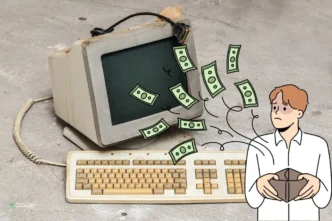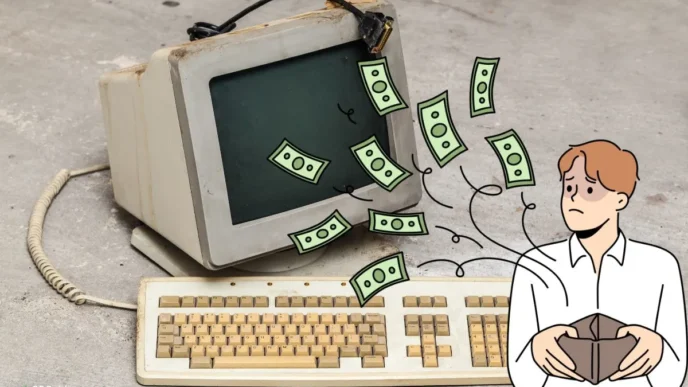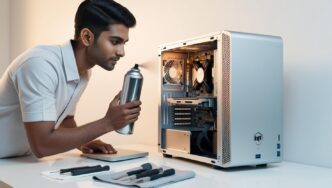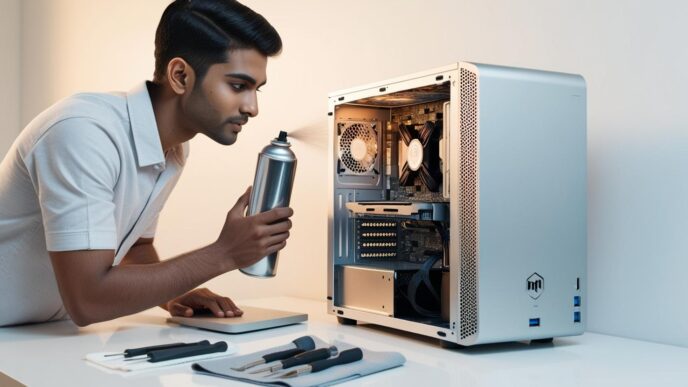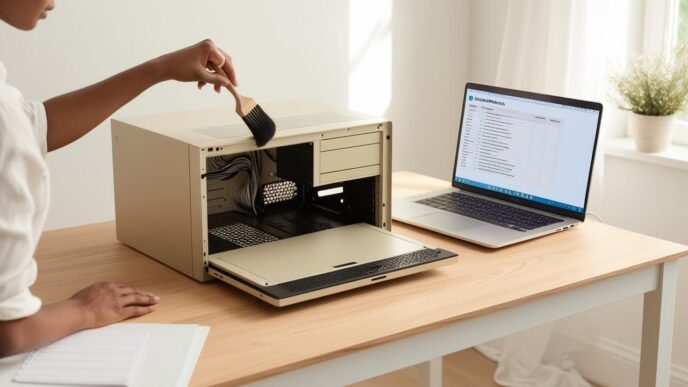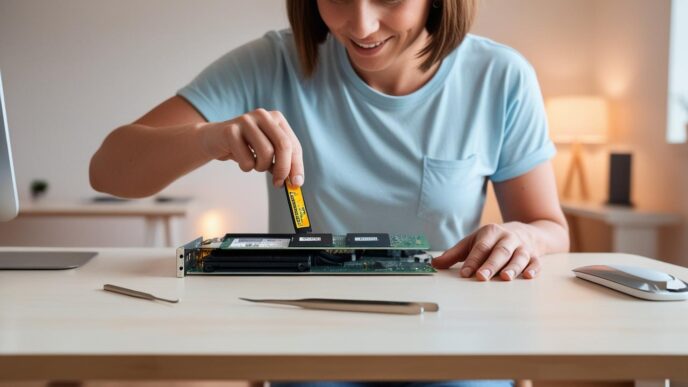Introduction: Protect Your Investment—Extend Your PC’s Life with Simple Habits
Is your Windows PC starting to feel sluggish, heat up more than usual, or take longer than expected to boot? If so, you’re not alone. Most of these issues don’t require costly repairs or hardware replacements—just a shift in your maintenance routine. Like any machine, a computer thrives when given regular attention. Neglect can lead to premature component failure, data loss, or slow performance that hinders your productivity.
This guide outlines ten essential preventive maintenance tips specifically for Windows desktop and laptop users. Whether you’re a student, professional, remote worker, or casual home user, these easy-to-follow practices can help extend the life of your system, improve speed, and minimize performance disruptions. From routine software cleanups to dust removal and startup control, each step offers actionable value for long-term computer health. Let’s dive into the practices that will keep your PC running like new.
1. Keep Your System Updated: The First Line of Defense
Updates aren’t just about new features—they’re vital for keeping your computer secure, compatible, and optimized. Regular updates to your operating system and drivers ensure that bugs are patched, performance is improved, and vulnerabilities are minimized.
What to Focus On:
- Operating system updates: These patches often include security improvements and performance boosts.
- Device drivers: Outdated drivers can cause crashes, poor device performance, or even hardware malfunctions.
- Built-in tools: Ensure Windows maintenance and diagnostic tools are also updated when prompted.
Practical Advice:
- Set update hours during low-usage times.
- Restart your device regularly to ensure updates are applied properly.
📌 Why It Matters: Up-to-date systems are faster, safer, and more stable—with fewer surprises.
2. Control Startup Programs for Faster Boot Times
Startup programs are applications that launch as soon as you boot your PC. While some are necessary, many are not—and they silently delay your startup time and consume resources.
What to Look For:
- Programs with high startup impact in Task Manager.
- Apps you rarely use but that auto-launch anyway.
Step-by-Step:
- Open Task Manager > Startup tab.
- Right-click on non-essential apps and select “Disable.”
Real-Life Win:
A user trimmed 8 unnecessary startup items and reduced boot time from over three minutes to under sixty seconds.
🔁 Putting It All Together: Less clutter during startup equals more speed and less frustration.
3. Clean Internal Dust and Improve Airflow
Dust isn’t just unsightly—it clogs vents, traps heat, and stresses your components. Heat is a major enemy of long-term performance and hardware lifespan.
Safe Cleaning Practices:
- Power off and unplug the PC.
- Use compressed air to clear fans, vents, and heat sinks.
- Avoid using vacuums—they create static.
Frequency:
- Clean every 3–6 months, more often if your space is dusty or you have pets.
User Scenario:
After cleaning vents and internal fans, one user noted cooler temperatures and far fewer automatic shutdowns.
💡 Take This With You: A cleaner PC runs cooler, quieter, and lasts longer.
4. Monitor and Manage System Resource Usage
Sometimes your PC feels slow because it’s overloaded—not broken. Monitoring resource use can help you pinpoint exactly what’s draining performance.
What to Monitor:
- CPU usage: Excessive percentages during idle time.
- RAM usage: Full memory limits system responsiveness.
- Disk activity: Consistent 100% usage indicates a bottleneck.
Tools to Use:
- Task Manager > Performance tab
- Resource Monitor for deeper insights
Example Table:
| Resource | Normal Usage (Idle) | Problematic Usage |
|---|---|---|
| CPU | 1-10% | 50%+ |
| RAM | 25-50% | 80%+ |
| Disk | <10% | 90-100% |
🧠 Remember This: Early detection of resource drain prevents system lag and damage over time.
5. Run Routine Security Scans and Avoid Malware
Malware and unwanted programs can hide in plain sight—disguised as helpful tools or unnoticed files. These threats consume memory, create pop-ups, and compromise data.
Preventive Security Steps:
- Schedule weekly or monthly full scans.
- Use built-in protection utilities to scan regularly.
- Avoid downloading unknown attachments or suspicious files.
Signs of Infection:
- Sudden slowdowns
- Unrecognized applications
- Spikes in network usage
Mini-Scenario:
After a scan detected two high-impact malware items, one user experienced improved loading times and stability.
📌 Why It Matters: Preventing infection is easier and cheaper than fixing the damage it causes.
6. Clean Up Junk Files and Temporary Data
Digital clutter adds up. Browser caches, update logs, and temporary files fill your storage, slow searches, and reduce responsiveness.
Cleanup Priorities:
- Browser caches and downloads
- System temp folders and error logs
- Old restore points and recycled files
Cleanup Routine:
- Use built-in disk cleanup utilities.
- Clear browser data weekly.
- Review storage settings monthly.
Real-World Impact:
One student recovered 10GB of storage and reported smoother multitasking post-cleanup.
💡 Take This With You: Less junk = more speed and smoother navigation.
7. Defragment (HDD) or Optimize (SSD) Your Drive
Storage drives can slow over time—especially older HDDs. Defragmenting rearranges fragmented files for faster access, while SSDs require a different approach.
What You Need to Know:
- Defrag for HDDs: Use built-in tools every 1–2 months.
- Optimize SSDs: Use the Optimize function to trigger TRIM operations.
Optional Table:
| Drive Type | Maintenance Needed | Frequency |
|---|---|---|
| HDD | Defragment | Monthly |
| SSD | Optimize (TRIM) | Every 1–2 months |
Scenario:
After defragging, one user noted significantly faster video editing speeds.
🔁 Putting It All Together: Tailored drive care boosts speed and ensures storage longevity.
8. Back Up Your Data Regularly
Preventive maintenance includes preparing for the worst. Backups ensure that a hard drive failure, malware attack, or accidental deletion doesn’t spell disaster.
Backup Tips:
- Use system restore points.
- Schedule weekly backups to an external device or secure location.
- Verify backups are complete and retrievable.
User Story:
After a system crash, one user restored critical school documents thanks to a weekly backup plan.
🧠 Remember This: Your data is often more valuable than your hardware—protect it.
9. Check Hardware Health Periodically
Hardware degradation happens gradually. By running diagnostics every few months, you can catch early warning signs.
What to Inspect:
- Disk health and temperature
- Physical fan function
- RAM behavior and stability
Tools:
- Use built-in disk check tools
- Monitor temperatures during high usage
Real-Life Case:
A user experiencing video stutters discovered faulty RAM—after replacement, playback returned to normal.
📌 Why It Matters: Spotting issues early avoids complete hardware failure and downtime.
10. Build a Preventive Maintenance Routine
Consistency beats crisis. Spreading out maintenance tasks keeps your PC healthy without overwhelming your schedule.
Routine Checklist:
- Daily: Close unused apps, restart.
- Weekly: Clear cache, delete temp files, scan for malware.
- Monthly: Check disk usage, defragment (HDD).
- Seasonally: Clean vents, inspect hardware.
Tips:
- Use calendar reminders.
- Create a maintenance log.
💡 Take This With You: A structured routine creates peace of mind and reliable PC performance.
Conclusion: Protect Your PC Today—So It Lasts for Years
A slow PC doesn’t always mean it’s outdated. Often, it just needs a little care. These ten tips offer simple, effective ways to extend the life of your device while improving daily performance. From software cleanups to dust removal, each action adds value without requiring technical expertise or additional expense.
Don’t wait for problems to surface—build your preventive maintenance routine today.
✅ CTA: Bookmark this guide and return to it monthly—it’s your roadmap to a longer-lasting, faster PC.
📌 Privacy Note: This article is for general informational purposes only. It does not collect personal data, and no professional services are being sold through this guide.


